I love literature, especially sharing stories aloud in class. On some occasions, I just want students to enjoy the read, without being saddled with a deep analysis, essay assignment, and the like. Quick assessments get students thinking and discussing the literature without a heavy workload, yet teachers get valuable snapshots of their learning.
How to Use the 10 Quick Assessment Ideas
You can assign one or two quick assessment ideas or let students choose one or two out of several choices you give. Students can simply complete these on their own paper or a Google doc or slide (less prep time for you!). If I’m assigning a few of them to use for a story, I like to have students fold a sheet of paper into quarters or halves and then number each section. They can divide a digital slide similarly. Having the response page sectioned off and numbered makes it more inviting for middle school minds.
Students love collaboration, and often these topics are fun to discuss with a partner or small group before students write their responses. You might allow a “two-minute talk it over” or something of that nature to help get the ideas flowing.
The 10 Quick Assessment Ideas for Literature
1. Teacher provides a sentence starter that students use and continue. You can set a parameter for how much writing you want from them. For instance, you might say “finish the sentence and add three more,” or simply “add sentences with more details and examples.”
2. Students draw a thought bubble for a character and then reflect on what the character is probably thinking, based on the circumstances in the story.
3. Teacher re-reads a really good part from the text aloud. Then ask students to explain what makes that a really good part.
4. Teacher reads a description of something (a setting, or something else that is vividly described). Ask students to sketch what they visualize.
5. Ask students to describe a particular moment that stood out for them in the reading. Next, have them exchange with a classmate and read and comment on each other’s thinking.
6. Tell students to imagine a small article has appeared in the newspaper regarding our character, ____________. Ask them, “What does it say?” Have them write the small article.
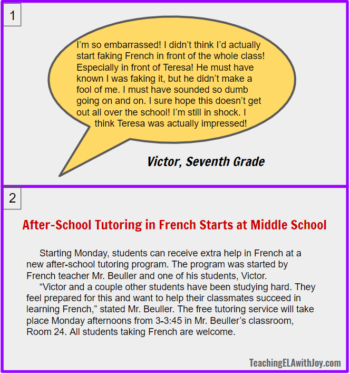
7. Have students make a T chart. On one side they write + (for positive), on the other – (for negative). Then have them list settings, characters, ideas, and events from the text for each side.
8. Have students decide on a “suggestion” or piece of advice they’d give to one of the characters at a certain point in the story. They need to provide reasons for the suggestion or advice. Or, have students imagine they could send a greeting card that says “Thinking of You” on the front but is blank on the inside. What message would they write there?
9. Ask students to explain the “gist” of today’s reading (or the story so far) for someone who has not read it.
10. Have students locate a number of unfamiliar words they are able to understand based on context clues in the reading. Students will list words, meanings, and context clues they found for each word.
There are so many more options, but hopefully, these 10 quick assessment ideas for literature will be a handy go-to list. When you want students to enjoy a great read without having to do a “deep dive,” just try few of these : )
You might like these short assessments ready to use with ANY literature. I have them differentiated for 3 levels of learners.
By the way, have you downloaded a copy of my free “Step into the Action” literature response activity, which you can save and edit in Google Drive? Find it in my post: 5 ELA Emergency Lesson Plan Ideas for Distance Learning.

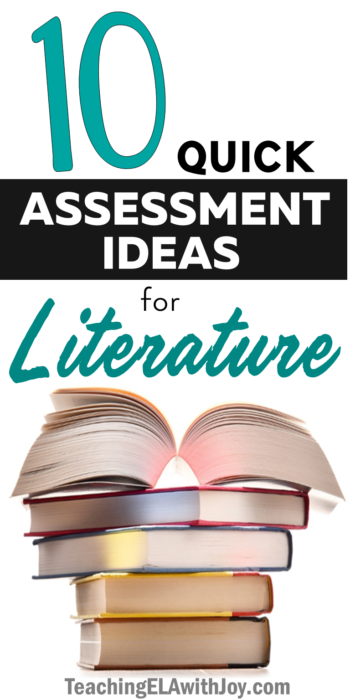
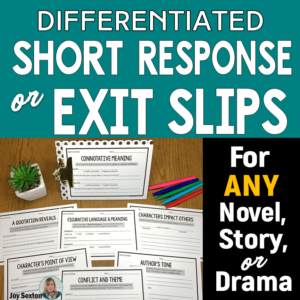
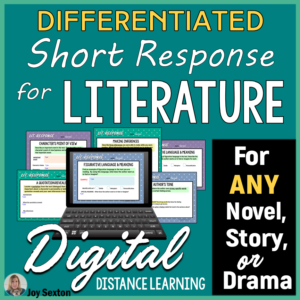

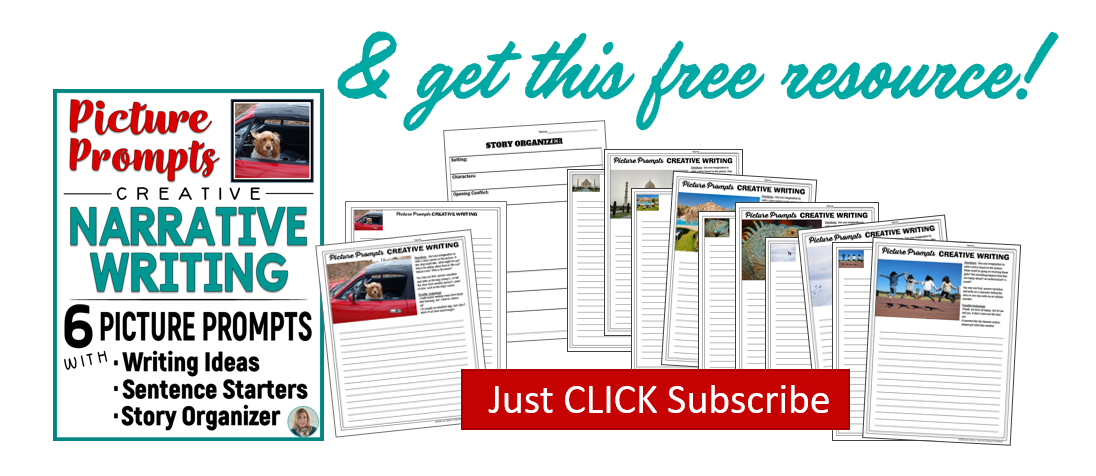


Leave a Reply